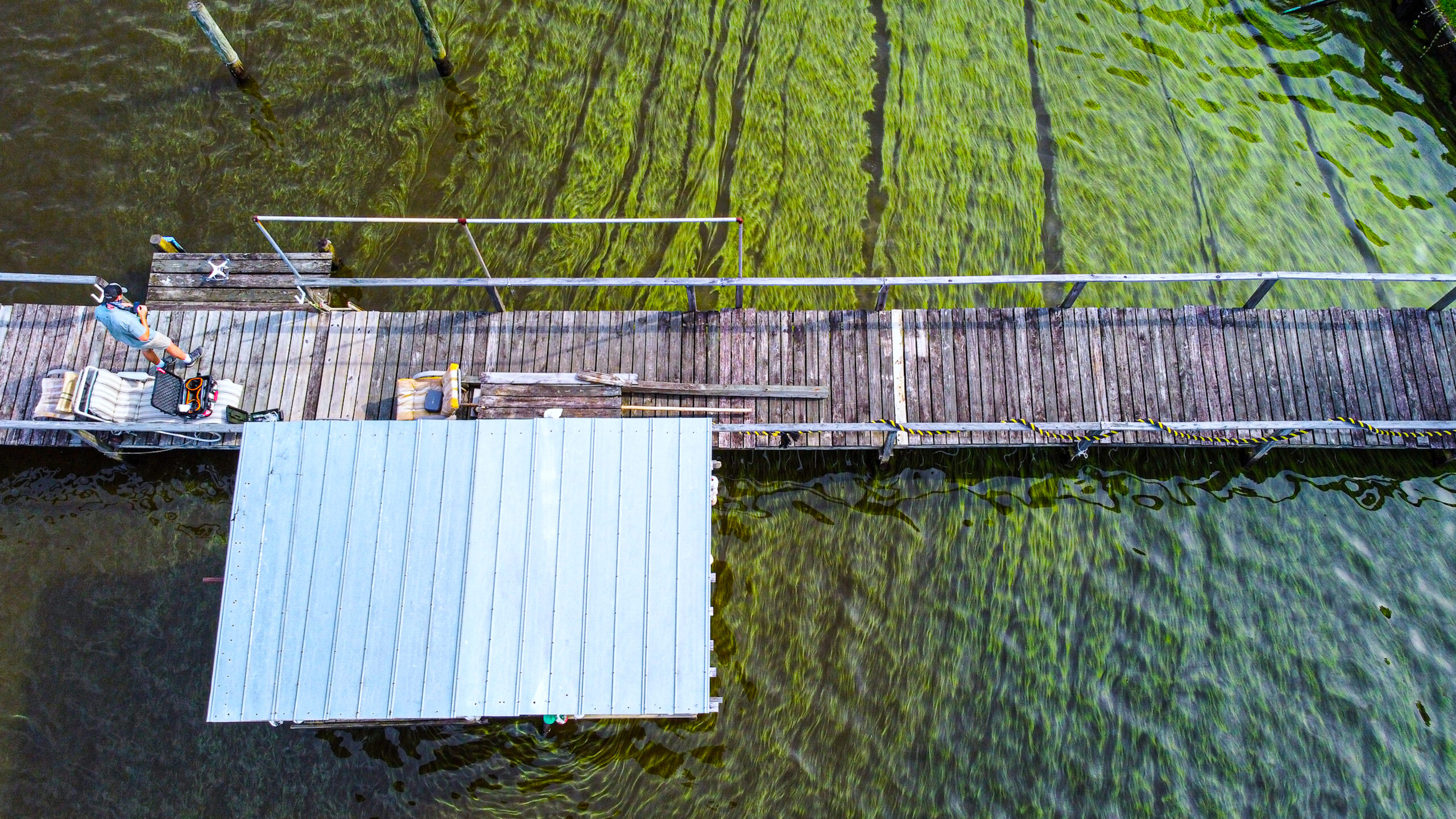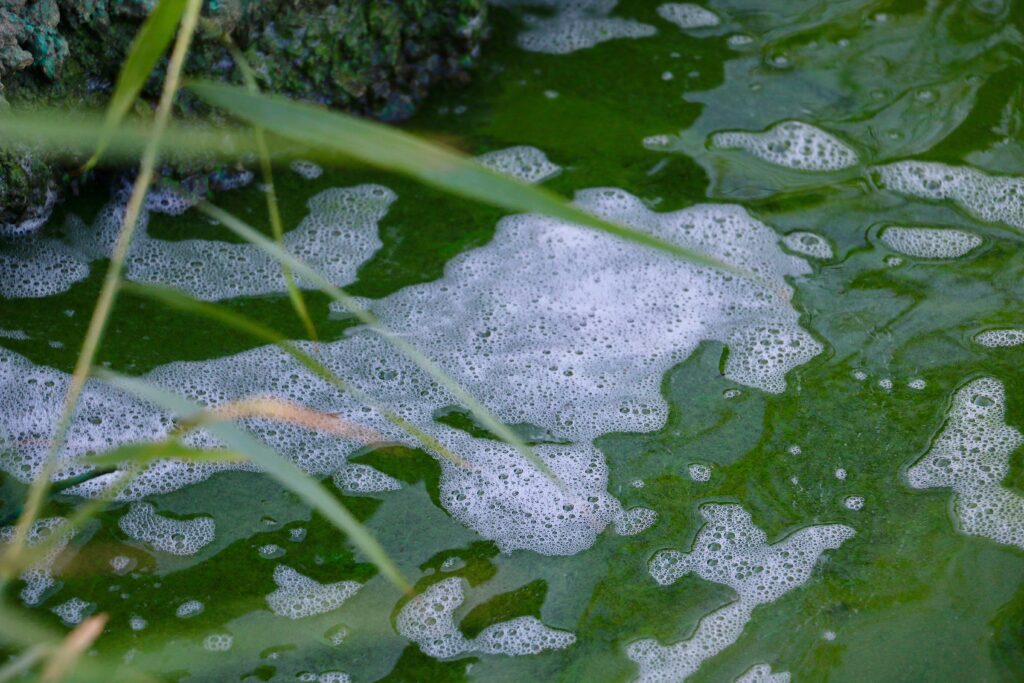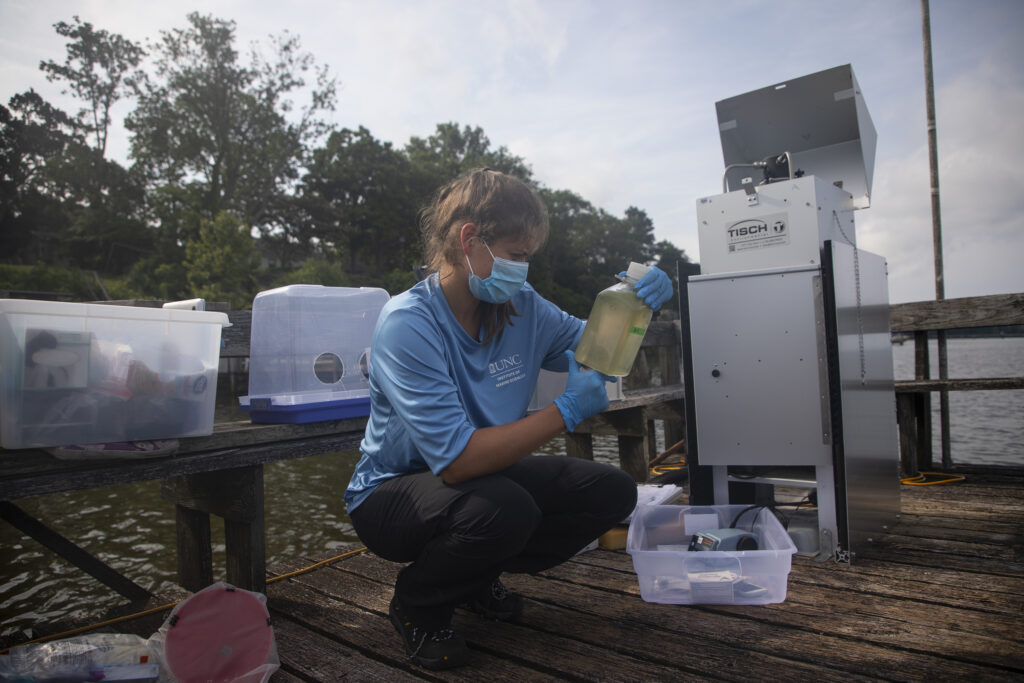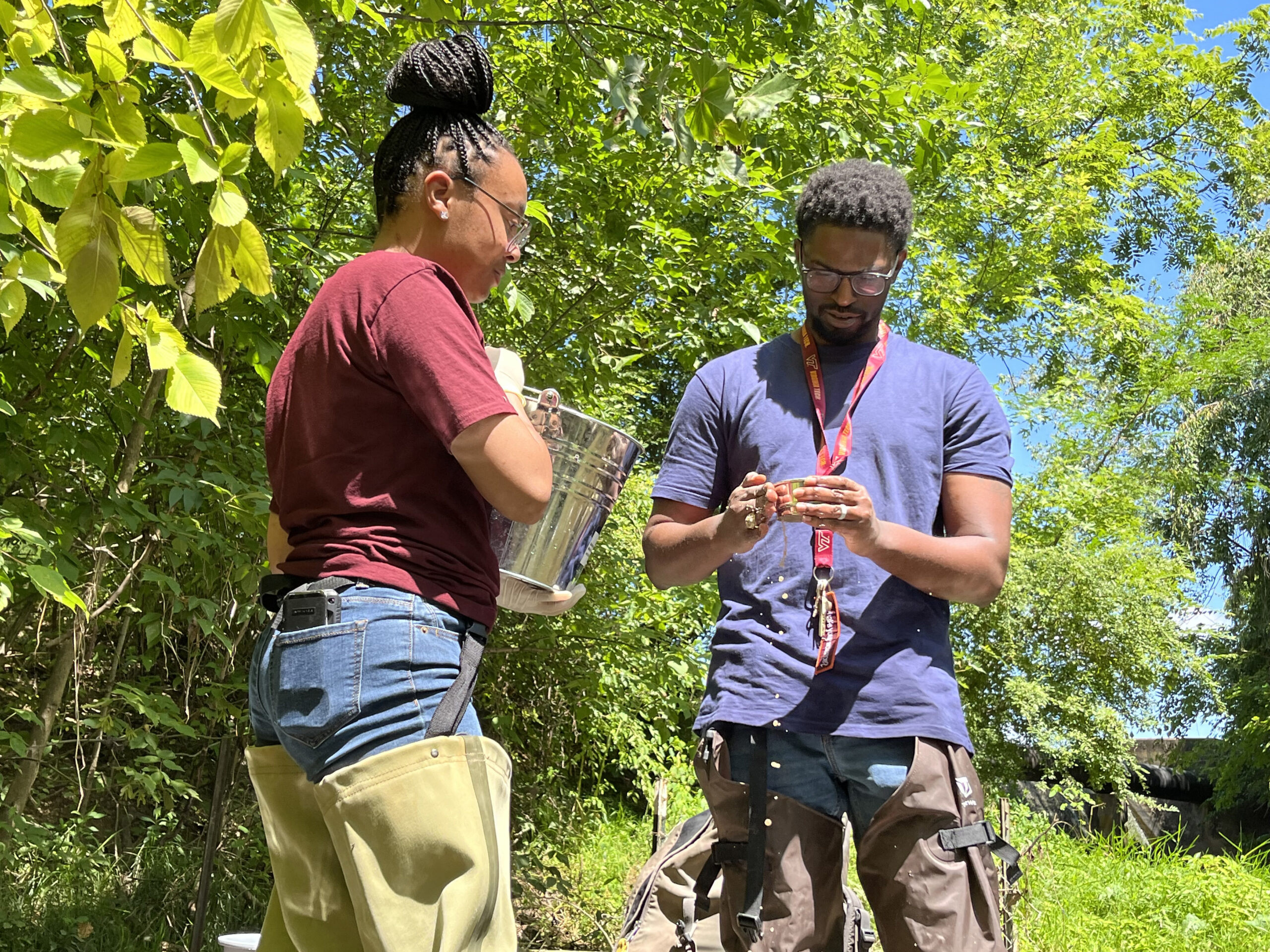Guide to Coastal Living
Algal Blooms: How to Stay Safe

How can we avoid harmful algal blooms?
Swirling speckles of green, blue, red, or brown can occasionally blanket the surface of freshwater or saltwater, creating a deep, shifting layer of color. Although this can be mesmerizing, you might be looking at an algal bloom, which is never good news.
What are algal blooms?
Algae is a naturally occurring photosynthetic organism typically found in watery environments. These organisms convert sunlight and nutrients into energy.
Some algae are so tiny that you cannot identify them without a microscope. These “microalgae,” comprising many different species, live in both freshwater and saltwater. Some are a food source, and in some cases, they can help increase the amount of oxygen in water.
Under the right conditions, algae can quickly multiply. Large masses of algae — “algal blooms” — can be dangerous.
What makes an algal bloom harmful?
Algal blooms deplete oxygen in the water when they die, causing dangerous conditions for fish. In turn, large die-offs of fish (“fish kills”) can occur.
Algal blooms also can harm the fish population by interfering with the hunting ability of fish that rely on sight to track their prey.
Because algal blooms can block sunlight, this can negatively impact local water plants, too.
In addition, some species of algae produce toxins, which increase in concentration during a “harmful algal bloom,” (HAB, for short). HABs can cause irritation and illness in people and animals, including pets and fish, and, in rare cases, HABs can even cause death.

In fact, HABs produce many types of toxins that can cause skin rashes and gastrointestinal issues, as well as damage to the liver, kidneys, and nervous system. People with compromised immune systems, children, and elderly adults are especially susceptible to these impacts.
Groundbreaking research for North Carolina Sea Grant by Haley Plaas has shown that these toxins can become airborne and that people can inhale them.
How can we identify and avoid harmful algal blooms?
There’s no way to tell if an algal bloom is harmful with the naked eye. Don’t take chances and avoid contacting unusually colored water.
Changes in water color, texture, and odor all can be signs of an algal bloom. Typically, water will have an unusual shade of green, blue, red, or brown. Blooms can look like streaks of paint, unusually colored foam, or large soupy patches. The water often is cloudy, slimy, or thick in texture, sometimes with floating mats. Some algal blooms smell musty or like rotten eggs.
Algal blooms occur in all varieties of bodies of water, from small backyard ponds to rivers, lakes, and oceans. Algae thrives in slow-moving or still water, warm weather, and when amounts of nutrients (like nitrogen and phosphorus) are high. Because nutrients commonly travel in stormwater runoff that transports pet waste and fertilizer, polluted water upstream can cause algal blooms downstream.

Contact with a bloom, even by boat or other recreational watercraft, increases the risk of airborne exposure.
Don’t consume contaminated water; boiling water doesn’t remove toxins. Avoid accidental exposure of pets from swimming or drinking water around a bloom. This is a problem especially during summertime in neighborhood stormwater ponds. Researchers are studying the health risks of consuming fish and shellfish exposed to HABs. The U.S. Food and Drug Administration currently recommends removing — before cooking — any part of fish in which toxins can accumulate.
If you come into contact with an algal bloom, be sure to check for signs of toxic exposure, such as rashes, coughs, stomach ailments, neurological symptoms like confusion, and more. These indicators appear within hours or days of exposure, often up to a week later. Seek immediate medical care if these symptoms are present.
How can we prevent algal blooms?
Preventing algal blooms is an individual and community effort that protects neighbors, pets, and coastal habitats. Local county Cooperative Extension offices will advise on proper fertilizer use and controlling stormwater runoff.
Strategies for preventing algal blooms include:
- Limiting the use of fertilizer and following the instructions.
- Minimizing and controlling stormwater runoff before it leaves a property.
- Preserving and maintaining vegetation buffers around water bodies to reduce runoff.
- Properly disposing of pet waste.
- Maintaining septic systems.
- Preventing surface runoff from agricultural or livestock areas.
- Preventing erosion at construction sites.
You can also help officials and researchers by reporting algal blooms, here.
More on algal blooms in North Carolina.
More on symptoms of HAB exposure.
The Guide to Coastal Living provides quick and practical information about how to live and thrive in a coastal environment.
Ashley Caine recently completed her internship with North Carolina Sea Grant and received her bachelor’s degree in environmental sciences from UNC Wilmington.
Mariko Polk is North Carolina Sea Grant’s coastal processes specialist.
lead photo: Algal blooms occur in all bodies of water, from small backyard ponds to rivers, lakes, and oceans. Credit: Abe Loven
- Categories:


